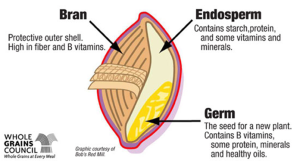Molly Mallette did a fantastic job with research to clarify this, the topic that sits in muddy waters….
Sugar has become a taboo word in the field of health as the excess consumption of it has contributed to the development or progression of many illnesses such as cardiovascular disease, diabetes, gum disease and dental caries, and obesity. As the incidence of these diseases has increased, the creation and use of artificial sweeteners has become very popular. Since artificial sweeteners contribute little to no calories while still providing sweetness similar to sugar, many people are turning to them as viable alternatives. This has created a great deal of controversy surrounding their use. In an article published by the Harvard Health Publications website (http://www.health.harvard.edu/blog/artificial-sweeteners-sugar-free-but-at-what-cost-201207165030), several of the issues revolving around artificial sweeteners are discussed.
Sugar, when consumed in the natural form such as in fruits, is not a large concern for our health (eating this version of sugar comes with vitamins, minerals, and fiber). The dangerous types are added sugars which are natural, but added to foods to increase sweetness. Added sugars contribute excess “empty” calories, which leads to obesity and other chronic diseases. In small amounts, added sugars are fine to consume, however for those who have a highly developed sweet tooth, limiting sweetened foods is no easy task.
The use of artificial sweeteners is becoming more popular as many people have become accustomed to regularly consuming sweets. Currently there are five FDA approved artificial sweeteners on the market which include saccharin, acesulfame, aspartame, neotame, and sucralose. These sweeteners either contribute very few calories, or contribute no calories as several are unable to be broken down by our bodies. Artificial sweeteners are also extremely sweet and therefore require smaller amounts to achieve the same level of sweetness as regular sugar sweetened items.
On the down side, the article suggests that the use of artificial sweeteners can play counterproductive roles in weight loss and healthy eating due to over consumption. According to the article, many people who are trying to lose weight turn to artificial sweeteners in order to save calories, but unfortunately they end up overcompensating for the “saved” calories by eating more food. Another interesting idea discussed is that artificial sweeteners may condition us to find more pleasure from extremely sweet tastes. This may cause us to dislike the taste of less sweet foods such as fruits and vegetables, and therefore cause us to eliminate them from our diets. As we know, fruits and vegetables are extremely important for overall health, and by eliminating them we are subjecting ourselves to other health risks. If we over consume artificial sweeteners, we may become somewhat addicted to them which can be another danger as well. Artificial sweeteners are still fairly new, and research is still indefinite about the safety of consuming these sweeteners in very high amounts.
What’s the other side of story? While there is a lot of unknown regarding the safety of high intakes of artificial sweeteners, if consumed in small amounts they may actually be beneficial to some people. For individuals looking to lose weight, a small dose of artificially sweetened beverages or snacks may help fill the sweet craving without the added calories. Replacing a regular soda with an artificially sweetened beverage may satisfy a sweet craving and prevent an individual from feeling deprived and bingeing on sugary foods. For patients with diabetes, foods high in sugar can raise blood glucose levels to abnormal levels. They benefit from managing sugar intake. Desserts often seem off-limits, but artificially sweetened snacks may be a better way for these individuals to indulge in a desert every so often. When considering the benefits of artificial sweeteners, it is important to remember portion size. The FDA has approved the artificial sweeteners as safe in moderate amounts (GRAS). Replacing every sugar sweetened food with the artificially sweetened version is not necessarily safe. Remember, research is still being conducted on artificial sweeteners and the effects of large doses of these items are not yet clear.
In order to decide if using artificial sweeteners is right for you, do some investigating on what current research suggests about the different sweeteners on the market. Replacing one high sugar item per day with the artificially sweetened version (of an appropriate portion size) may help you stay on track with a healthy diet. On the other hand, you may decide that you are uncomfortable with the use of these sweeteners and therefore limiting overall added sugar may be the route for you.
Here’s a starting point for further reading:

